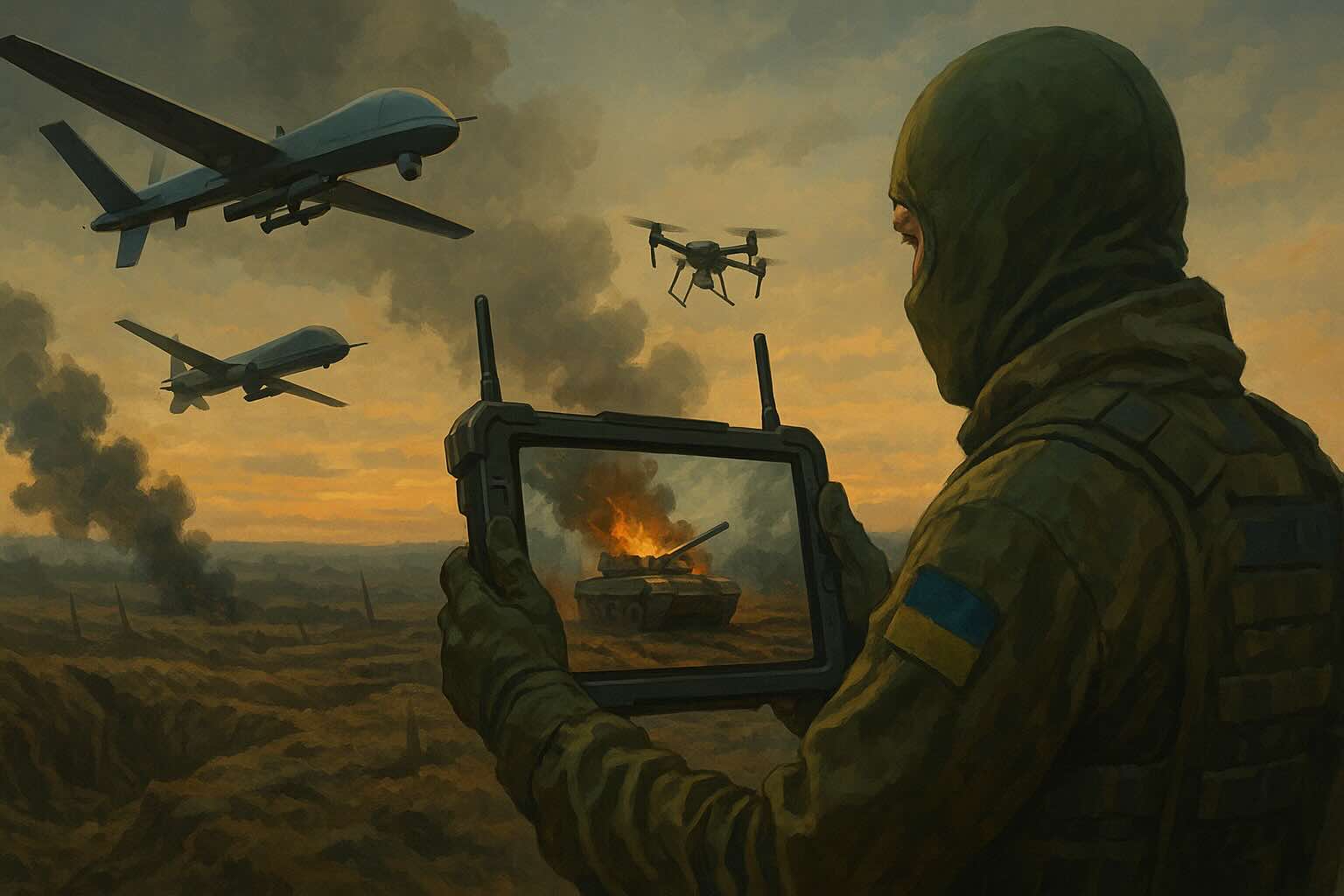


Writing for the Washington-based think tank, Andrijanič argues that investment in Ukrainian drone production offers the most cost-effective means of weakening Russia’s military position and forcing a retreat.
Drawing on first-hand observations during a recent visit to a Ukrainian drone command centre, Andrijanič describes a battlefield increasingly shaped by unmanned systems. Ukrainian forces, many of them young and tech-savvy, are using first-person view (FPV) drones to target Russian armour, artillery, and fortifications with precision and at scale. The “gamification” of drone warfare, where drone operators are scored for successful strikes, has created a competitive and efficient system for maximising battlefield effect. Each drone, often costing hundreds of euros, is reportedly destroying targets worth many times more.
Since 2022, Ukraine has used drones to offset Russia’s superiority in conventional arms and manpower. According to the Royal United Services Institute, drones account for as much as 70 percent of all confirmed Russian losses. This includes strikes on frontline positions and deep incursions into Russian territory. In June 2025, Ukraine’s “Operation Cobweb” damaged or destroyed approximately twenty Russian military aircraft across several airbases using coordinated drone swarms.
Beyond the air domain, Ukraine employs unmanned ground vehicles to resupply frontlines, evacuate wounded personnel, and attack enemy positions. Maritime drones, meanwhile, have succeeded in expelling Russia’s Black Sea Fleet from its traditional base in occupied Crimea and have reportedly struck helicopters and aircraft.
However, Ukraine’s drone dominance is being challenged. Russia has increased its production of Shahed drones and introduced fibre-optic systems that are reportedly resistant to jamming. In response, Kyiv has announced plans to produce four million drones in 2025, with support from a twenty-nation Drone Coalition led by the UK and Latvia. This group has pledged €2.75 billion towards the delivery of an additional one million drones.
Yet logistical and industrial constraints have hampered delivery timelines. Most member states rely on their own limited production capacities. In contrast, what Andrijanič terms the “Danish model” of military assistance offers a faster and more scalable route. Under this system, Denmark has channelled pooled donor funds – including proceeds from frozen Russian state assets – into direct purchases from Ukrainian drone manufacturers. This bypasses intermediary steps, reduces costs, and accelerates procurement. Total disbursements are expected to reach €1.5 billion this year.
Still, current output of five million drones annually falls short of the estimated ten million units required to achieve strategic overmatch. Ukrainian officials say that such a scale-up is realistic but would require an additional €10 billion over two years. They note that the country’s drone sector, initially based on makeshift garage assembly lines, has evolved into a high-volume industry using primarily domestic and Western components. Ukraine’s drone models are now said to rival Western equivalents at significantly lower cost.
Innovation cycles are rapid. Battlefield feedback is quickly incorporated into updated designs, with new drone variants emerging within weeks. Industrial-grade 3D printing allows airframe redesigns without retooling, while Ukraine’s decentralised defence tech sector offers resilience and adaptability.
To meet Ukraine’s projected demand, Andrijanič calls for a dedicated drone production initiative, drawing on bilateral grants, windfall interest from frozen Russian assets, and low-interest EU loans through the SAFE instrument. He further argues that the EU should integrate Ukraine into a common defence market, enabling collaboration between European industry and Ukrainian drone producers. This would, he says, benefit both sides: Ukraine would gain access to European capital and contracts, while the EU would benefit from proven battlefield technologies and scalable production.
Historically, military advantage has often been determined by technological shifts. Artillery defined the First World War, armoured and air forces reshaped the Second, and the 1991 Gulf War highlighted the power of precision-guided weapons. Today, Andrijanič writes, unmanned systems are emerging as the dominant military technology. Ukraine has the operational experience, industrial capacity, and technical expertise to lead in this domain – but lacks the funding to do so at scale.
Failure to act, he concludes, would prolong the war, destabilise Europe, and embolden authoritarian regimes. Conversely, a concerted investment in Ukraine’s drone sector could force a Russian withdrawal and restore regional stability. Western decision-makers, he writes, must recognise the changing nature of warfare – as Ukraine’s drone operators already have.
SAFE Alone Will Not Rearm Europe: Structural Weaknesses Undermine EU Defence Finance Plan